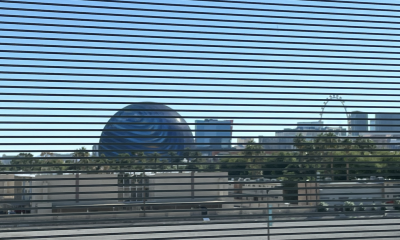LAS VEGAS — Las Vegas’ latest outlandish, dare I say garish, building is the new Sphere, which opens to the public this week, kicking off with a concert by U2.
Those of us attending MWC Americas in Las Vegas this week can see the Sphere from the windows of the convention center.
And inside the convention center John Mezzalingua, CEO of JMA Wireless, talked yesterday about the company’s work deploying a distributed antenna systems (DAS) for the Sphere, which Mezzalingua said was very complicated. “There’s metal everywhere, signals bouncing all over the place and enormously high expectations for the connectivity,” he said. The company had to create a simulation of the Sphere at its manufacturing facility in New York to figure out how to optimize the antennas for the project.

Currently, JMA is leveraging its extensive DAS knowledge for private wireless.
“If you think about DAS some would say it’s the most complex environment in all of wireless,” said Mezzalingua. There are a lot of people in a condensed environment who are stressing the network, and the DAS has to be architected to work around a lot of physical structures.
“If you know DAS then you know a lot about private wireless and how to unlock it,” he said. “Of course they’re different. DAS is a rebroadcast and distribution. And private wireless is broadcast and distribution.”
But both DAS and private wireless require a deep knowledge of RF. “You have to know what you’re doing as it relates to the radio,” he said. “You also have to focus on the things the radio attaches to. If you don’t understand the antenna and the pivotal role that plays you’re not going to optimize the network.”
He said that for both DAS and private wireless the radio should last for a long time – about 10 years. Enterprises will evolve their private wireless networks over time and “things will happen in an organic way.” People need their radios to last a reasonable amount of time.
“DAS is complex, and private wireless is not going to be any less trivial,” he said.
He also predicts that private wireless will give enterprises the opportunity to consolidate many of their in-building networks that they currently manage. Those include Wi-Fi networks, video surveillance networks, electronic signage networks and, of course, in-building carrier coverage.
“You can converge all these networks into one physical infrastructure,” he said. This is highly complex, as complex as DAS, using technology to collapse siloes and have them communicate with each other.”
Yesterday, J.R. Wilson, vice president of Tower Strategy & Roaming with AT&T, said he sees private wireless networking as the next big thing for in-building connectivity.
Asked if private wireless would cannibalize AT&T’s DAS business, Wilson said he sees nothing but great opportunity with private wireless. “I think it’s a whole new life. I think the big difference is the carrier is not going to be funding it like we funded DAS.”